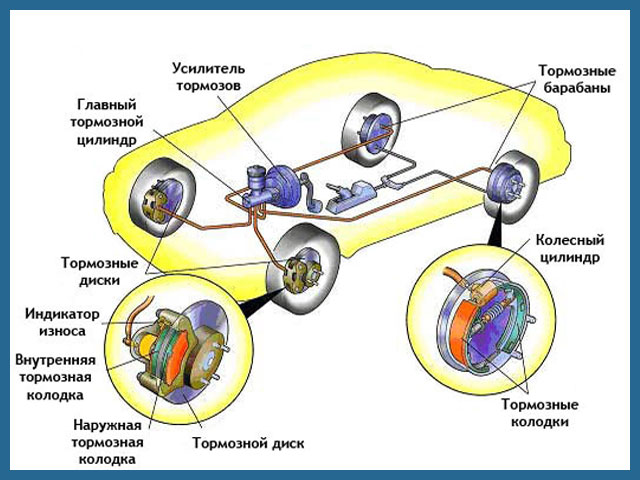
Blocking brakes - the most common causes and solutions
Content
It is always very dangerous to block the brakes while driving. In most cases, the problem starts when the calipers or brake pads gently block the wheels. This can go unnoticed by the driver for a short distance, for example, when driving in the city, and when driving on the highway, problems with reversing the brake pads lead to overheating of the brake caliper, an increase in the temperature of the brake fluid and, as a result, loss of effective braking.
What are the (most common) symptoms?
It is best to evaluate the correct operation of the brake system after a long trip, during which the speed of the car is often lost. The most common symptoms of its failure are elevated rim temperature and the characteristic smell of hot metal. Dust from worn brake pads can also appear on the rim. In addition, prolonged driving with the brakes inoperative will result in a significant reduction in vehicle performance and increased fuel consumption.
Where to look for causes - service brake
In the vast majority of cases, faulty brake pistons are the cause of the car's wheels locking up. Their failure occurs as a result of contamination or corrosion of the piston surface, which makes it difficult (or even impossible) to move it back after releasing pressure on the brake pedal. As a result, the pads constantly rub against the discs. How to fix the problem? In case of contamination, it is enough to polish the plunger. However, if the latter is corroded, it should be replaced immediately. Sticking caliper guides can also cause problems, allowing the caliper to slide against the fork. During operation, they get stuck, which leads to damage to the rubber coating. In most cases, the repair is simple and comes down to cleaning and lubricating the guides and replacing the rubber boot. Another element that limits the free rotation of the wheels of the car are jammed or badly worn brake pads. The first of these faults mainly affects vehicles with occasional use and low mileage. Corrosion accumulates at the points of contact between the pads and the caliper fork, blocking the free movement of the brake pad, which is pressed against the disc after the piston is removed. How to fix such a malfunction? The contact surface should be thoroughly cleaned and the technical condition of the brake pads should be checked: heavily worn ones tend to be located in the caliper at an angle and rub against the discs. The solution to the problem is to replace worn brake pads with new ones.
Pump and brake hoses
In vehicles where the brake fluid is not periodically changed, the brake system becomes contaminated with gradually accumulating sludge. The latter restricts the master cylinder piston and does not fully retract. In this case, the pump must be thoroughly cleaned (regenerated) or, in case of serious damage, replaced. In addition, brake hoses can cause incorrect operation of the brake system. As a result of progressive wear, they swell and pieces of rubber break off inside. This leads to obstructions in the flow of brake fluid. In the event of this kind of malfunction, you should definitely replace the worn lines with new ones and replace the brake fluid contaminated with rubber pieces.
Where to look for causes - auxiliary (emergency) brake
Very often, problems also arise due to auxiliary brakes, i.e. drums are still used in many car models. The defect is most often associated with sticking of the pistons in the cylinders, which is caused by corrosion or damage to their protective rubber. During daily use, various types of dirt accumulate inside the brake drums, as well as dust from worn brake linings and rust. The latter, falling under rubber boots, can effectively block the movement of the pistons in the cylinders. The repair consists in replacing the cylinders with new ones (it is possible to regenerate, but not profitable). In vehicles that have not been used for a long time, the auxiliary brake cable sometimes jams, in particular if the cable armor is damaged. Moisture from the environment then gets inside, eventually leading to corrosion pockets that restrict the free movement of the brake cable and, in extreme cases, cause it to break. A stuck brake lever can also be a problem. Then the problem lies in the jammed control lever, the so-called brake pad spacers after hand tightening. As with the cases mentioned above, the cause of failure is contamination and corrosion.
